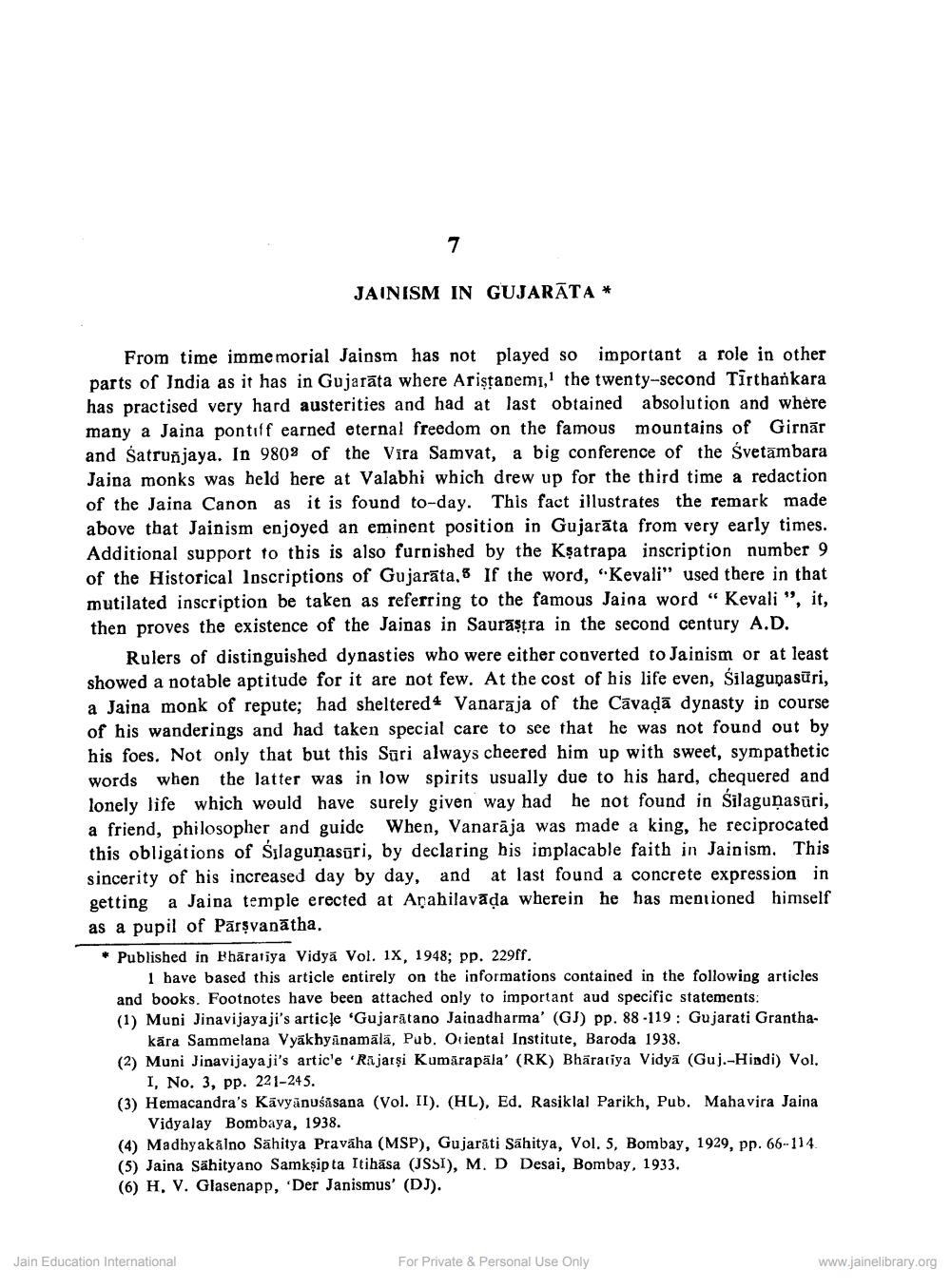________________
JAINISM IN GUJARATA *
From time immemorial Jainsm has not played so important a role in other parts of India as it has in Gujarāta where Aristanemi,' the twenty-second Tirthankara has practised very hard austerities and had at last obtained absolution and where many a Jaina pontiff earned eternal freedom on the famous mountains of Girnar and Satrunjaya. In 980% of the Vira Samvat, a big conference of the Svetambara Jaina monks was held here at Valabhi which drew up for the third time a redaction of the Jaina Canon as it is found to-day. This fact illustrates the remark made above that Jainism enjoyed an eminent position in Gujarāta from very early times. Additional support to this is also furnished by the Kşatrapa inscription number 9 of the Historical Inscriptions of Gujarāta, 3 If the word, "Kevali" used there in that mutilated inscription be taken as referring to the famous Jaina word “Kevali ", it, then proves the existence of the Jainas in Saurastra in the second century A.D.
Rulers of distinguished dynasties who were either converted to Jainism or at least showed a notable aptitude for it are not few. At the cost of his life even, Silagupasūri, a Jaina monk of repute; had sheltered 4 Vanaraja of the Cavadā dynasty in course of his wanderings and had taken special care to see that he was not found out by his foes. Not only that but this Sūri always cheered him up with sweet, sympathetic words when the latter was in low spirits usually due to his hard, chequered and lonely life which would have surely given way had he not found in silaguņasūri, a friend, philosopher and guide When, Vanaraja was made a king, he reciprocated this obligations of silagunasūri, by declaring his implacable faith in Jainism. This sincerity of his increased day by day, and at last found a concrete expression in getting a Jaina temple erected at Aộahilavāļa wherein he has mentioned himself as a pupil of Pārsvanātha. Published in Bharatiya Vidya Vol. 1x, 1948; pp. 229ff.
1 bave based this article entirely on the informations contained in the following articles and books. Footnotes have been attached only to important aud specific statements: (1) Muni Jinavijayaji's article 'Gujarātano Jainadharma' (GJ) pp. 88-119 : Gujarati Grantha
kāra Sammelana Vyākhyānamālä, Pub. Oriental Institute, Baroda 1938. (2) Muni Jinavijayaji's article 'Rijarsi Kumārapäla' (RK) Bharatiya Vidya (Guj.-Hindi) Vol.
I, No. 3, pp. 221-245. (3) Hemacandra's Kävyānušāsana (Vol. II). (HL), Ed. Rasiklal Parikh, Pub. Mahavira Jaina
Vidyalay Bombaya, 1938. (4) Madhyakalno Sahitya Pravāha (MSP), Gujarati Sahitya, Vol. 5, Bombay, 1929, pp. 66-114 (5) Jaina Sahityano Samkşip ta Itihāsa (SSI), M. D Desai, Bombay, 1933. (6) H, V. Glasenapp, 'Der Janismus' (DJ).
Jain Education International
For Private & Personal Use Only
www.jainelibrary.org




